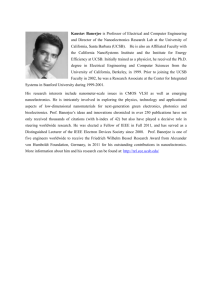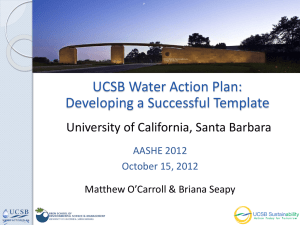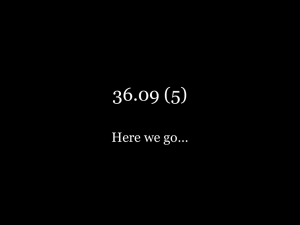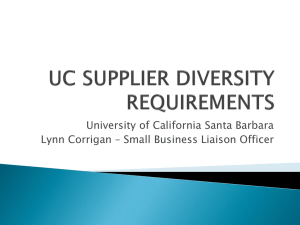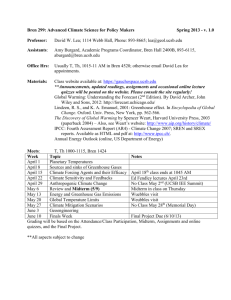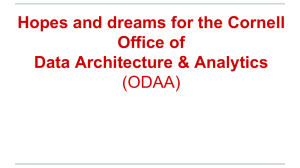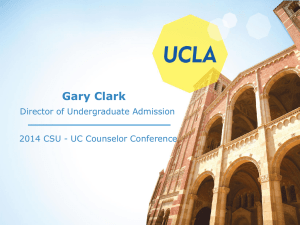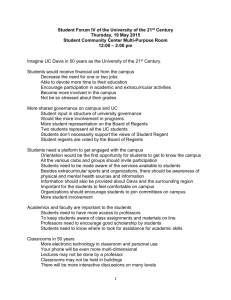IT Organization Governance
advertisement
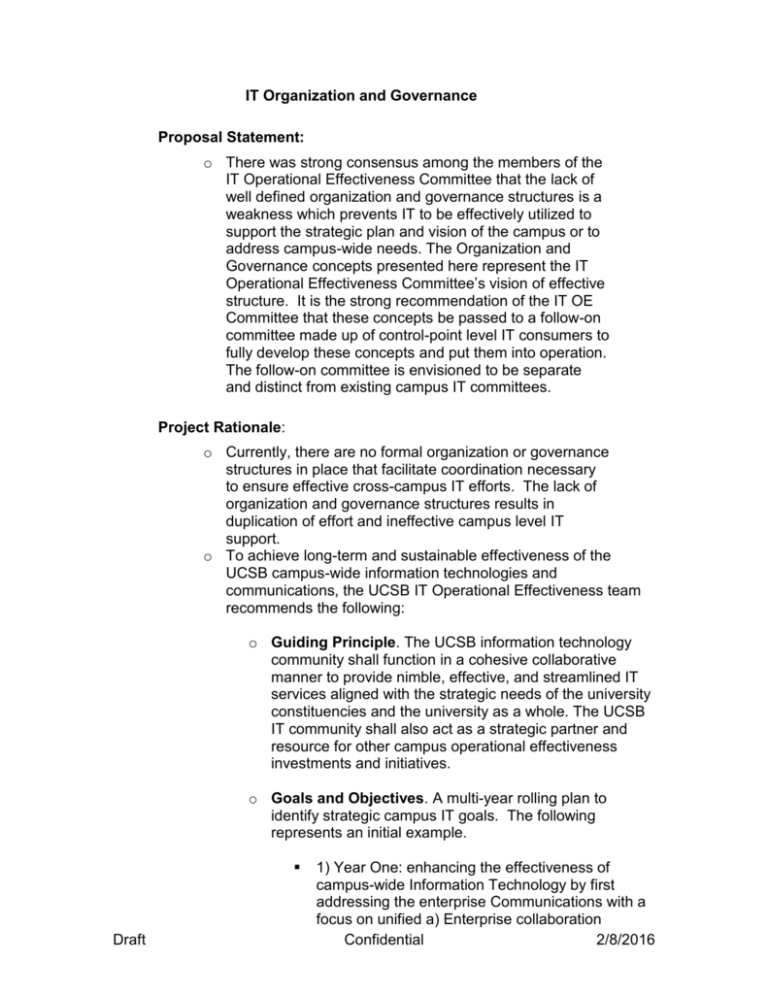
IT Organization and Governance Proposal Statement: o There was strong consensus among the members of the IT Operational Effectiveness Committee that the lack of well defined organization and governance structures is a weakness which prevents IT to be effectively utilized to support the strategic plan and vision of the campus or to address campus-wide needs. The Organization and Governance concepts presented here represent the IT Operational Effectiveness Committee’s vision of effective structure. It is the strong recommendation of the IT OE Committee that these concepts be passed to a follow-on committee made up of control-point level IT consumers to fully develop these concepts and put them into operation. The follow-on committee is envisioned to be separate and distinct from existing campus IT committees. Project Rationale: o Currently, there are no formal organization or governance structures in place that facilitate coordination necessary to ensure effective cross-campus IT efforts. The lack of organization and governance structures results in duplication of effort and ineffective campus level IT support. o To achieve long-term and sustainable effectiveness of the UCSB campus-wide information technologies and communications, the UCSB IT Operational Effectiveness team recommends the following: o Guiding Principle. The UCSB information technology community shall function in a cohesive collaborative manner to provide nimble, effective, and streamlined IT services aligned with the strategic needs of the university constituencies and the university as a whole. The UCSB IT community shall also act as a strategic partner and resource for other campus operational effectiveness investments and initiatives. o Goals and Objectives. A multi-year rolling plan to identify strategic campus IT goals. The following represents an initial example. Draft 1) Year One: enhancing the effectiveness of campus-wide Information Technology by first addressing the enterprise Communications with a focus on unified a) Enterprise collaboration Confidential 2/8/2016 systems (email & calendaring), b) Student email solutions, and c) the future of telephone services. 2) Year two: focus on IT Infrastructure, Security and Disaster Recovery. 3) Year three: Unified Enterprise Systems and Services. o Organization. A federated model utilizing pockets of excellence, economy of scale, and economy of scope with strong alignment with UCSB divisions and executive control points Project Aim & Outcomes: o The aim of the project is to provide the campus with organizational and governance concepts that are fully endorsed by the IT Operational Effectiveness Committee. Diagram 1 below depicts the Organizational Structure Concept that is fully endorsed by the IT OE Committee. Diagram 2 below depicts the Governance Structure Concept that is fully endorsed by the IT OE Committee. These are concepts to be used as a starting point for follow-on discussion and action. UCSB IT Organization Structure Concept CIO Organization Vice Chancellor of Student Affairs Director Student Affairs IT Director Administrative Services IT Vice Chancellor of Administrative Services Executive Vice Chancellor TBD By Academic Affairs Control Point TBD By Research Control Point Vice Chancellor of Research TBD Other Organizational Control Points To achieve long-term and sustainable effectiveness of the UCSB campus-wide information technologies and communications, the UCSB IT Operational Effectiveness team recommends the following: Guiding Principle. The UCSB information technology community shall function in a cohesive collaborative manner to provide nimble, effective, and streamlined IT services aligned with the strategic needs of the university constituencies and the university as a whole. The UCSB IT community shall also act as a strategic partner and resource for other campus operational effectiveness investments and initiatives. Goals and Objectives. The IT Operational Effectiveness team will engage in a multi-year process to enhance the effectiveness of campus-wide Information Technology. Year one will address enterprise Communications with a focus on a) Student email solutions, b) Enterprise collaboration systems (email & calendaring), and c) the future of telephone services. Additional years will focus on other areas, such as IT Infrastructure and Unified Enterprise Systems and Services. Diagram 1: Draft This diagram depicts the IT OE Committee’s concept for the UCSB IT Organizational Structure. Follow-on action is required to complete the Confidential 2/8/2016 definition of the roles responsibilities, and dotted line relationships required to implement this concept. UCSB IT Governance Structure Concept Department Proposals CIO organization develops project plan - assures enterprise standard adherence Proposal Evaluation Implementation and Operational Support Pocket of Excellence Project Team Funded By Campus Sources EISPG Project Identification ITB CIO Org ITB CIO Org ATPG Feedback ITPG Diagram 2: This diagram depicts the IT OE Committee’s concept for the UCSB IT Governance Structure. Follow-on action is required to complete the definition of the relationships, resourcing, and funding required to implement this concept. Implementation Roadmap: o The OE Steering committee must create a follow-on committee comprised of control-point level IT consumers and a small contingent of senior IT representatives to fully develop these concepts and put them into operation. o The follow-on committee must address items to include explicit scope addressed by the organization and governance structures, organizational dotted line relationships, roles, responsibilities, resource allocation, and funding. o The following IT consumers are suggested as potential committee members: David Marshall, Michael Young, Willie Brown, Jody Kaufman, Eric Sonquist, Donna Trimble, Karen Hanson, Chuck Haines, Tom Putnam, Doug Drury. o The committee should engage a consultant to evaluate similar structures that are being successfully utilized at other research campuses to achieve goals similar to UCSB’s. Draft Confidential 2/8/2016 o The committee should provide a recommendation based on the work of the consultant with committee input. Resources: o Committee members to allocate up to 4 hours per month each. o Consultant fees – estimated at $25,000. Scheduling: o Consultant recommendations within 4 months of engagement. o Committee recommendation to the campus within 6 months of committee formation. Dependencies: o Consultant statement of work and procurement. Risks: o Draft Confidential 2/8/2016
